About the plan
Hennepin County is developing a climate action plan with initiatives to reduce greenhouse gas emissions and strategies to adapt to our changing climate in ways that reduce vulnerabilities and ensure a more equitable and resilient Hennepin County.
The plan will serve as the foundation for the county’s coordinated approach to planning, policy development, and responses to climate change.
Take the survey
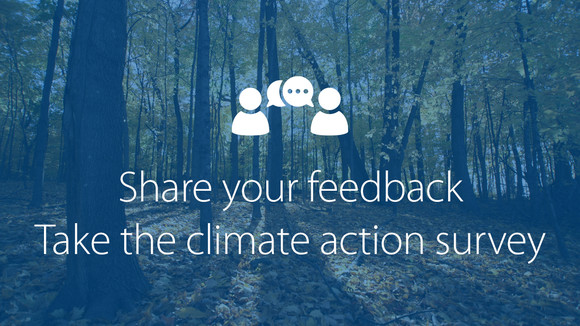
The climate action survey is a chance for Hennepin County residents to:
- Reflect on the impacts you have experienced from climate change.
- Share what you value that is being threatened by climate change.
- Provide feedback on the county’s priorities for responding to climate change.
- Tell us what you think we need to do to create a climate-friendly future.
The survey will be open until Friday, December 4.
Spread the word and encourage others to respond
We are hoping to hear from as many residents as possible, so please share this with your family, friends, and neighbors and encourage them to respond.
How the responses will be used
Responses to this survey will inform the draft of the climate action plan, and a summary of the feedback will be shared with Hennepin County Commissioners when the draft plan is submitted to the board by the end of the year.
Learn more and get climate action updates
For more information and updates, visit hennepin.us/climateaction and sign up for climate action email updates.
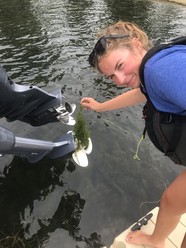
Local government agencies, nonprofit organizations, institutions, and businesses in Hennepin County can apply now for funding to implement projects that prevent the spread of aquatic invasive species.
Grant funding can be used to address pathways of aquatic invasive species introduction, provide education, promote behavior change, implement early detection and rapid response efforts, and other ideas that prevent the spread of aquatic invasive species.
Applications for this round of grants will be accepted starting December 1 and are due by Thursday, January 14, 2021. Learn more and apply.
For more information, contact Tony Brough at tony.brough@hennepin.us or 612-348-4378.
|
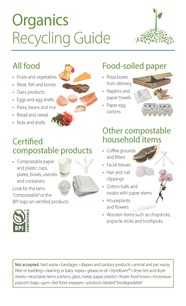
In organics recycling programs, materials including food, food-soiled paper, and certified compostable products are taken to a local commercial compost facility and recycled into compost, a nutrient-rich material that is used in landscaping and road construction projects to improve our soil.
Participants in organics recycling programs say it’s a surprisingly easy way to make a difference. It provides a “feel good” benefit, helps the environment, and results in a visible reduction in trash.
The recently updated organics recycling guide (PDF) includes the following updated tips for collecting organics at home.
Know what’s accepted
|
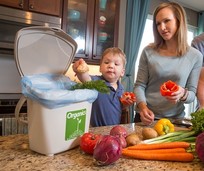
Know what is accepted for organics recycling and keep non-compostable materials out. This ensures local composters can produce clean, nutrient-rich compost that people want to purchase and use. If you aren’t sure what to do with an item, refer to the organics recycling guide or put it in the trash.
Focus on collecting food
Spoiled food and food scraps are the most common material in the trash and the most nutrient-rich material in the composting process, which makes them the most important material to collect for organics recycling.
|
Use a vented container
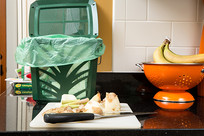
Use a kitchen pail with a vented lid and line it with a compostable bag. Vented containers allow moisture to evaporate, which will reduce odors and help your compostable bags hold up longer.
Minimize liquids
Drain excess liquids, keep “wet” organics in your refrigerator or freezer, or place paper towels or newspaper at the bottom of your container. This all helps to slow the decomposition of food, reduce odors, prevent flies, and help compostable bags last longer.
|
‘Tis the season for holiday decorating and gift shopping. The holiday season can contain a substantial amount of consumption and waste, but it doesn’t have to be that way! Follow these tips to make low waste and sustainable choices this holiday season.
Secondhand holiday shopping and decorating

Incorporating used goods into your gift giving and holiday decorating might make the 2020 holiday season one of the greenest ever! Check out the secondhand holiday guide to get your creativity flowing. The guide has tips for finding décor and table settings, a list of 10 gift items to look for at reuse stores, and ideas for putting together the perfect holiday outfit.
There are also shopping opportunities coming up that support local reuse retailers in a way that is good to the environment and your wallet. Learn more in our recent article on how to make an event of holiday gift giving and decorating by shopping used. Before you visit any store, check hours and COVID-19 shopping requirements, since they might change unexpectedly, and lower your risk while you're shopping by keeping up on CDC guidelines.
|
Unique reclaimed and salvaged gifts

There are many local retailers that sell reclaimed and salvaged building materials where you can find perfect gifts for the antique lover, DIY-er, chef, and game night planner in your life.
Find a full list of local businesses who reuse and recycle building materials and home goods, and apply for deconstruction grant funds to salvage building materials during your next home project at hennepin.us/deconstruction.
|
Gift wrap
Make your gifts look glam while making the best environmental choice!
Reusable gift wrap
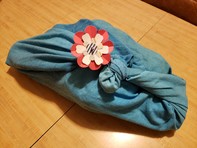
- Reuse what you already have: Pull from your stash of gift bags and tissue paper. If you don’t have any – start collecting!
- Get creative: Things like old maps and packaging paper are great for wrapping, and they can be recycled after!
- Opt for cloth wrapping: Use the Furoshiki method of folding cloth over your gift in the place of wrapping paper.
- Skip the wrapping: Use a decorative box or reusable bag to avoid the needs for wrapping all together.
|
Purchasing wrapping paper

- Use recyclable paper: Wrapping paper that isn’t glossy and has no metallic elements can be recycled.
- Avoid shimmer and texture: Metallic, velvet or glittery paper is not recyclable.
- Buy recycled paper: Continue the recycling loop by purchasing paper with recycled content.
- Consider alternatives to tissue paper (since it isn’t recyclable).
Bows, ribbons, and adornments for gifts

- Reuse ribbon, string, and bows: Saving bows and ribbons means you will have a supply on hand to make presents beautiful and unique.
- Use natural adornments: Pinecones or sprigs of rosemary, fir, cedar or spruce make your presents look (and smell) festive!
- Choose fabric ribbons: If purchasing ribbon, buy fabric ribbon that can be reused year after year.
|
Artificial or real Christmas trees
What type of tree to buy – real or artificial – is a question that comes up every holiday season. Which is not surprising, because there are pros and cons to each and ways to make either decision greener. The following graphics provide some things to consider for both options:
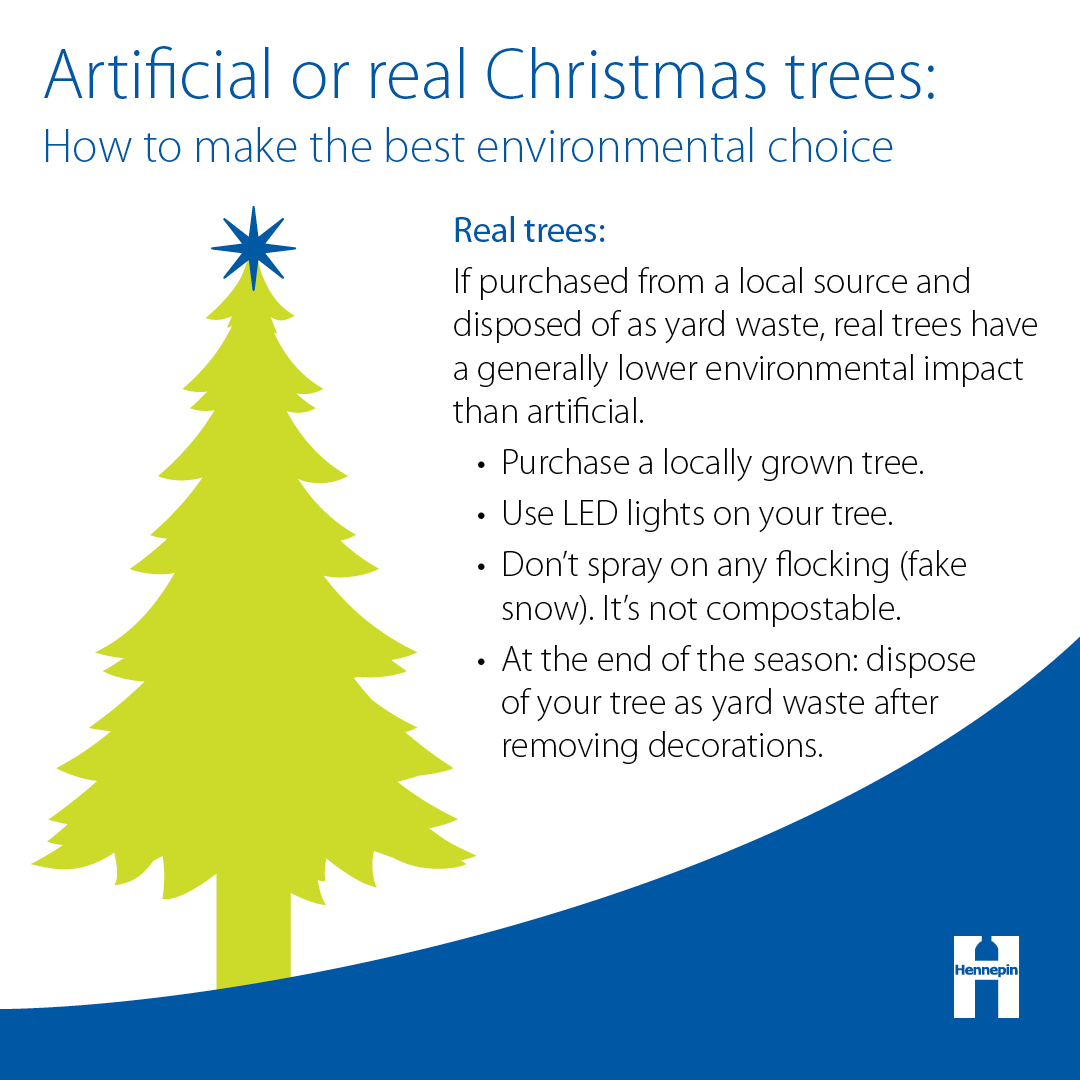 
|